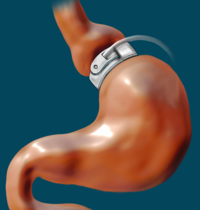
Photo from wikipedia
Transabdominal ultrasound (TAUS) is useful in all aspects of lesion screening, monitoring activity, or treating/diagnosing any related complications of inflammatory bowel disease. Its ability to screen or diagnose complications is… Click to show full abstract
Transabdominal ultrasound (TAUS) is useful in all aspects of lesion screening, monitoring activity, or treating/diagnosing any related complications of inflammatory bowel disease. Its ability to screen or diagnose complications is almost the same as that of other methods, such as CT or MRI. Moreover, its noninvasiveness makes it a first-line examination method. A TAUS image depicting ulcerative colitis will show large intestinal wall thickening that is continuous from the rectum, which is mainly due to mucosal layer thickening, while for Crohn’s disease, a TAUS image is characterized by a diversity in the areas affected, distribution, and layer structure. Indicators of activity monitoring include wall thickness, wall structure, and vascular tests that use Doppler ultrasound or contrast agents. While all of these have been reported to be useful, at this time, no single parameter has been established as superior to others; therefore, a comprehensive evaluation of these parameters is justified. In addition, evaluating the elasticity of lesions using elastography is particularly useful for distinguishing between fibrous and inflammatory stenoses. However, the lack of objectivity is the biggest drawback of using ultrasound. Standardizing and popularizing the ultrasound process will be necessary, including scanning methods, equipment settings, and image analysis.
Journal Title: Korean Journal of Radiology
Year Published: 2022
Link to full text (if available)
Share on Social Media: Sign Up to like & get
recommendations!